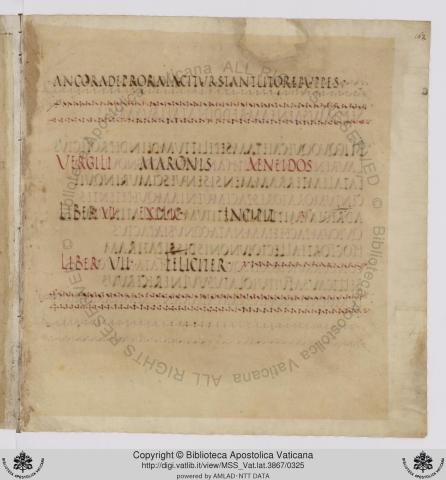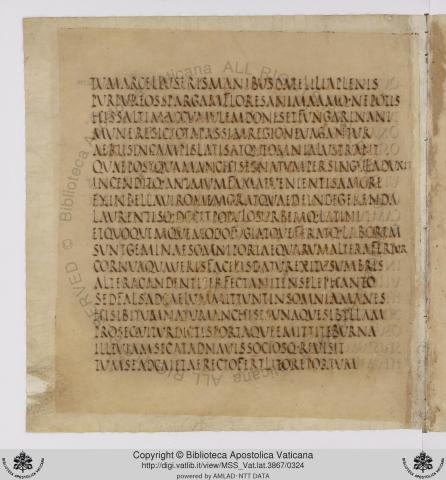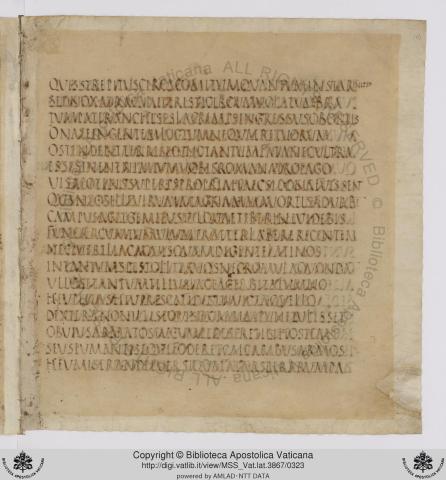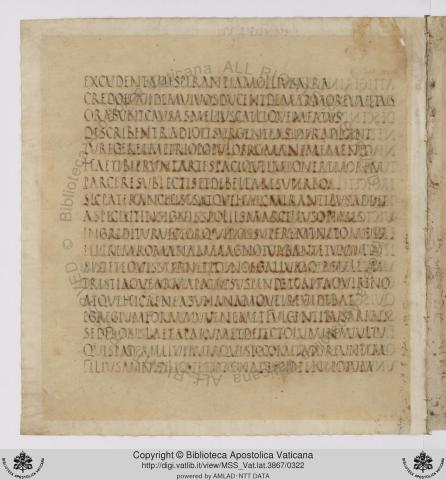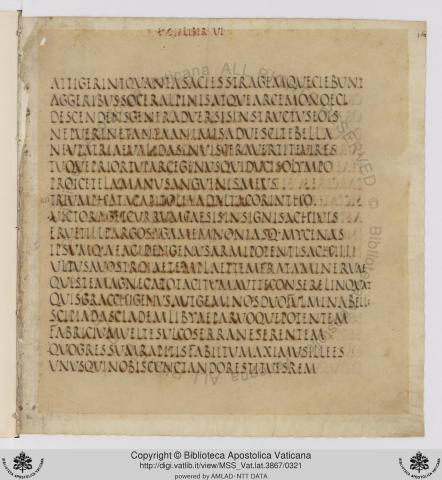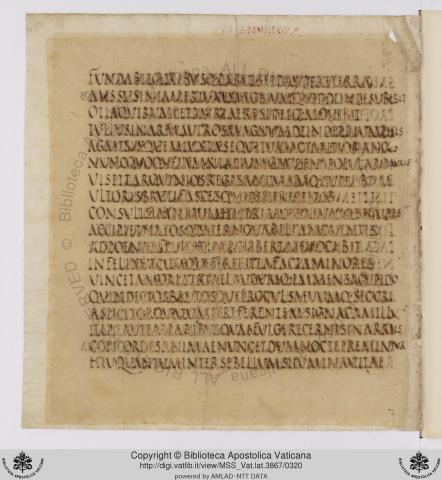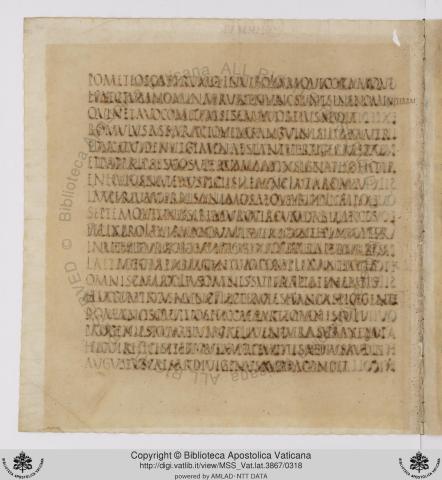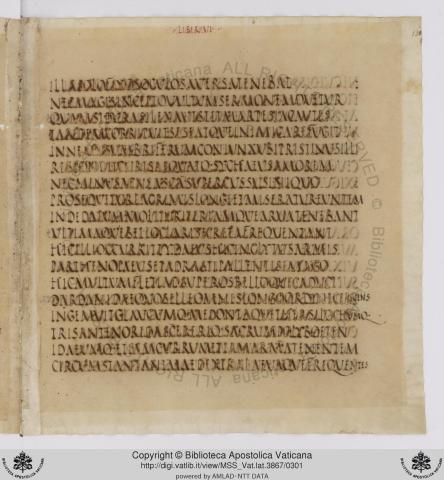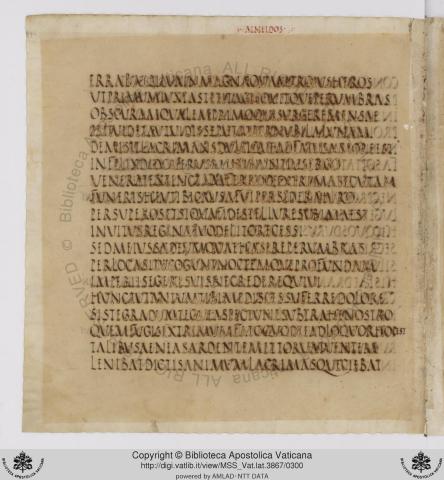Vat.lat. 3867 162r
Annotations
R: Vaticanus Latinus 3867, the "codex Romanus," also known as the Vergilius Romanus. One of the oldest and most important Vergilian manuscripts, written in the beginning of the sixth century AD in rustic capitals. It has nineteen large miniatures, including a portrait of the author. Its surviving leaves contain most of the Aeneid, the Georgics, and some of the Eclogues. Its place of origin is disputed, with some scholars believing that is was originally written in Ravenna, others that it derives from Byzantium or elsewhere in the eastern Roman Empire. It is of considerable significance in establishing the text of the Aeneid, though not as important as M (Florentinus Laurentianus XXXIX.1) or P (Vaticanus Palatinus lat. 1631) (Conte 2011, ix).

